| |
Hospital
de Bellvitge |
|
19-10-1989
Huge hospital
complex. Until Nov. 2003, the station was called Feixa Llarga,
which means 'long terraced field' and evokes a former rural area.
|
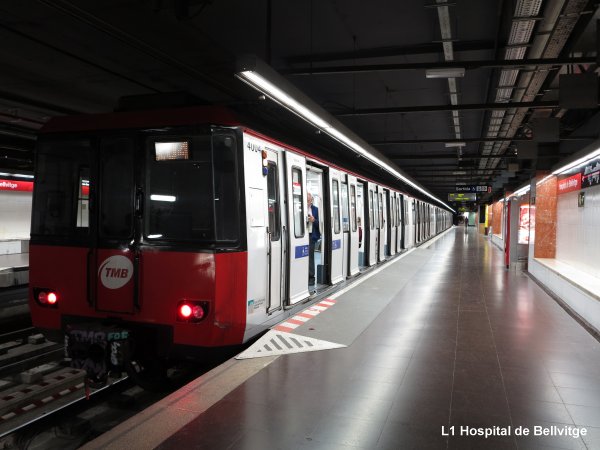
|
| |
Bellvitge |
|
19-10-1989
Large residential
area built in the 60's next to an old chapel named 'nice view'.
|
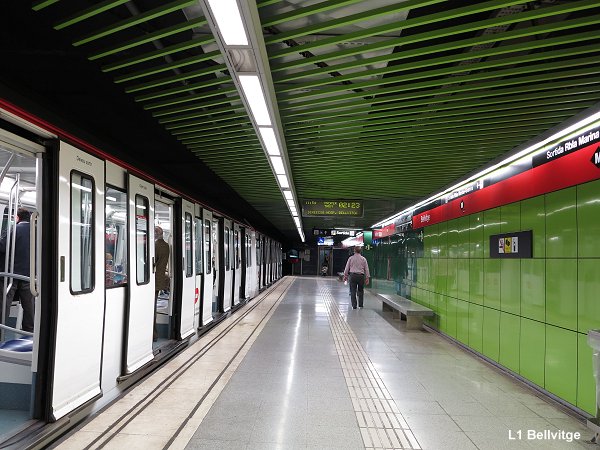 |
| |
Avinguda
Carrilet |
 |
24-04-1987
The 'Carrilet'
is a narrow gauge train that now runs underground along this avenue of
L'Hospitalet.
|
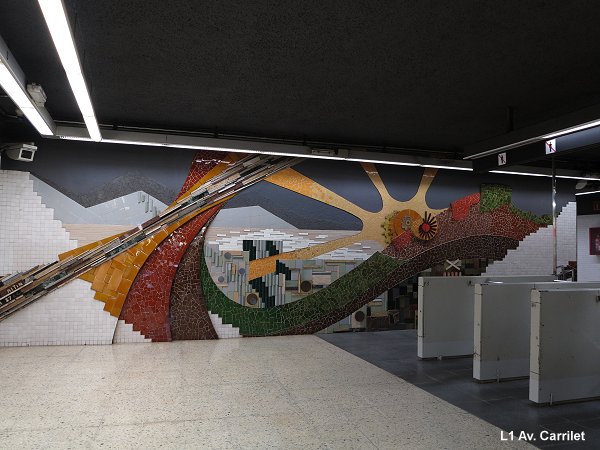
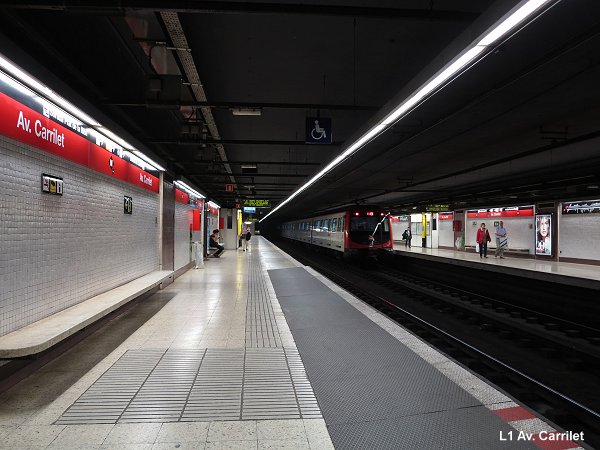
|
| |
Rambla
Just Oliveras |
 |
24-04-1987
Central
pedestrian artery of L'Hospitalet named after a mayor and city developer.
|
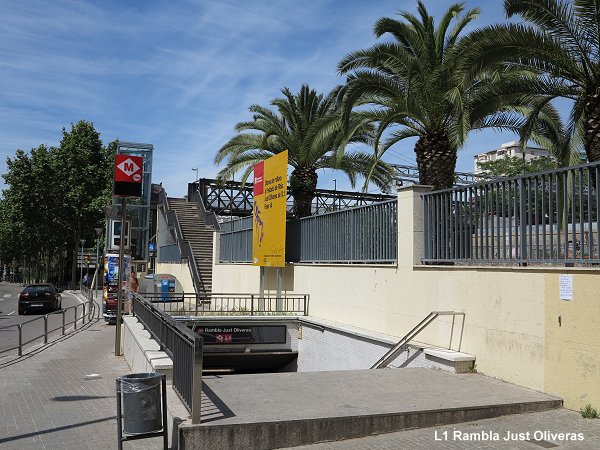 |
| |
Can
Serra |
|
24-04-1987
Former manor
house that left its name for a modern residential area.
|
|
| |
Florida |
|
24-04-1987
Residential
area designed as a garden city at the beginning of the century - apart
from some street names not many flowers are left.
|
|
| |
Torrassa |
 |
23-12-1983
Neighborhood
of L'Hospitalet called after a former big house or tower in the area.
Future interchange
with L9/L10
|
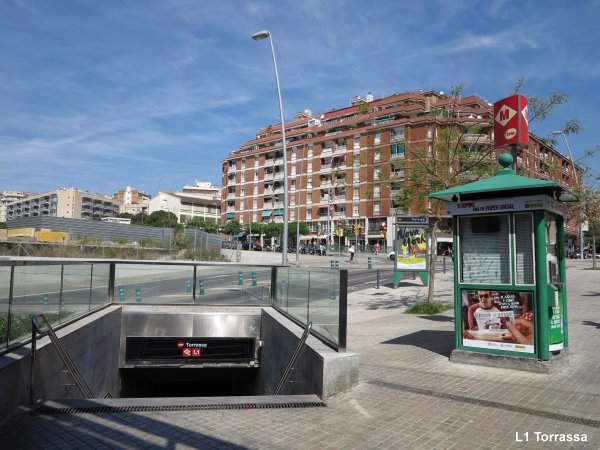
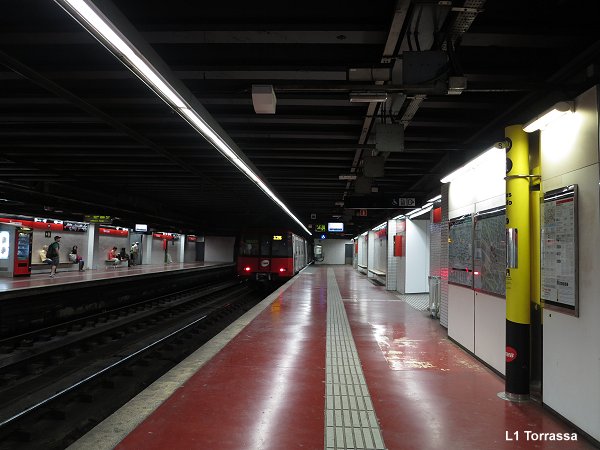
|
| |
Santa
Eulàlia |
|
01-07-1932;
closed 05-07-1980
present station opened 23-12-1983
District
of L'Hospitalet. There are two saints of that name, both martyrs in early
Christian days - now also patron saint of Barcelona.
|
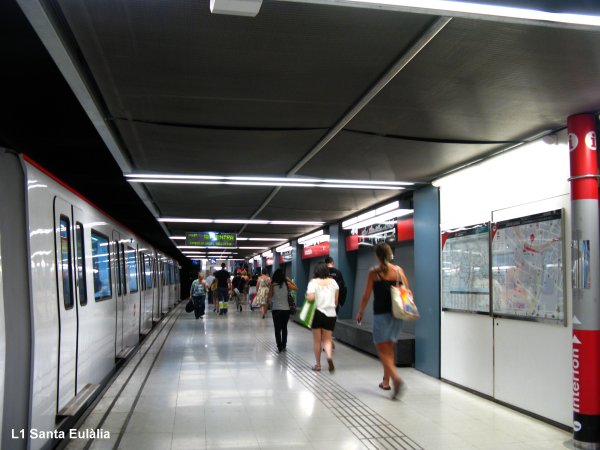
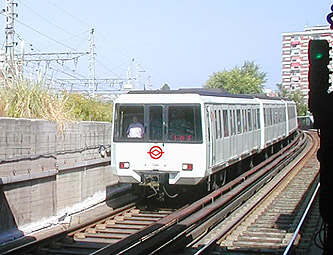
|
| |
Mercat
Nou |
|
10-06-1926
Actually
meaning 'New Market', the name of this market could also be derived from
a former manor house called 'Nou'. This is one of Barcelona's two surface
stations.
|
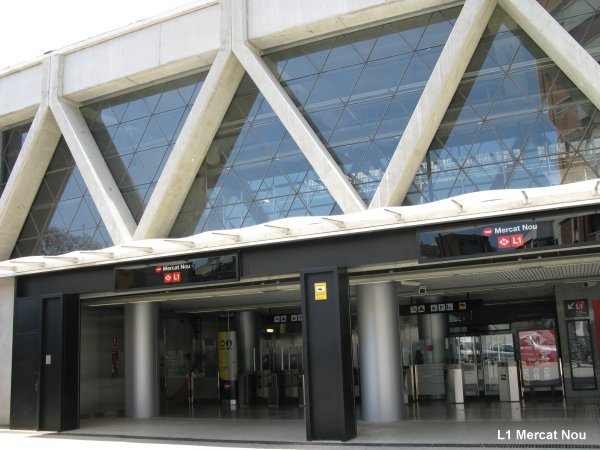
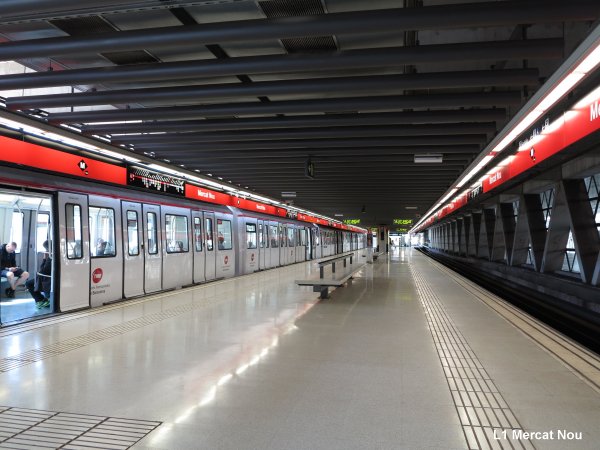
|
| |
Plaça
de Sants |
 |
10-06-1926
Originally
only called 'Sans', it's in the heart of this historic district of Sants-Montju´c,
actually meaning 'saints'. As an exception for the Barcelona Metro 'Plaša
de' was added to distinguish this station from the nearby 'Sants-Estaciˇ'
station on L3/L5.
|
|
| |
Hostafrancs |
|
10-06-1926
Neighborhood
founded around a hostel, whose owner named it after the village he came
from - Hostafrancs in Segarra (Lleida). This station was totally renovated
in early 2000.
|
|
| |
Espanya |


|
10-06-1926
This huge
round square was designed for the 1929 exhibition which took place at
the Fair Centre nearby.
|
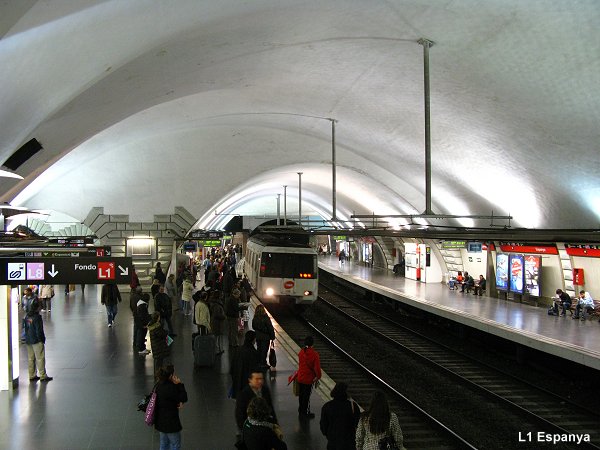 |
| |
Rocafort |
|
10-06-1926
Street dedicated
to Bernat de Rocafort, a Catalan knight in the 13th century who sailed
the Mediterranian and fought against the Muslims in the name of Christ.
|
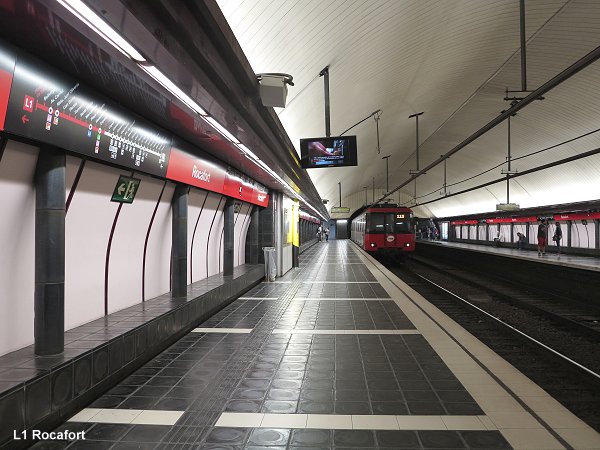 |
| |
Urgell
|
|
10-06-1926
Urgell was
a large county in today's province of Lleida, one of the historic parts
of Catalonia. The street's dedicated to Jaume II, count of Urgell, who
lived in the 14/15th century.
|
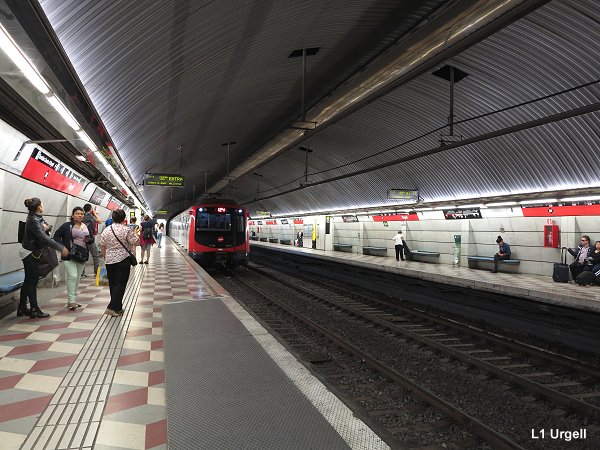 |
| |
Universitat
|
 |
10-06-1926
The 'old'
University was built in 1874 by Elies Rogent just outside old Barcelona
after the city walls were torn down. Before that there was a University
like school on the upper part of the Rambla, popularly called 'Rambla
d'Estudis'.
|
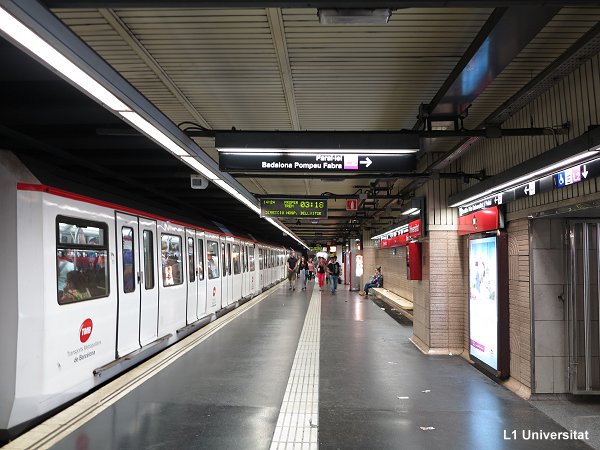 |
| |
Catalunya |




|
10-06-1926
Huge central
square built as a bridge between old and new town and obviously named
after the country of which Barcelona is the Capital. There are actually
4 stations underground: L1, L3, the terminus station for the FGC urban
and suburban lines (5 platforms) and a RENFE Suburban Rail station parallel
to L1. Present L1 station opened with line extension in 1932.
|
|
| |
Urquinaona |
 |
01-07-1932
Square named
after a 19th century Barcelona bishop.
|
|
| |
Arc
de Triomf |
 |
01-07-1932
The triumphal
arch was built by Josep Vilaseca as a gateway to the 1888 exhibition held
in nearby Ciutadella Park. It was originally called 'Triunfo-Norte' serving
also the former North Station (a terminal station closed in 1972)
|
|
| |
Marina
|
|
01-04-1933
Street dedicated
to all Catalan marines, merchants and naval forces. The street runs down
from Sagrada FamÝlia to the new Olympic Port, deserving this name again.
|
|
| |
Glòries
|
 |
23-06-1951
The 'Plaša
de les Gl˛ries Catalanes' was designed by city developer Ildefons CerdÓ
as a meeting point of the three major avenues of his 'Eixample': Gran
Via de les Corts Catalanes, Diagonal and Meridiana. Rebuilt in the early
90's it's now a huge motorway oval with a park in the middle. There you
can find monuments dedicated to all Catalan Glories, civic and military.
|
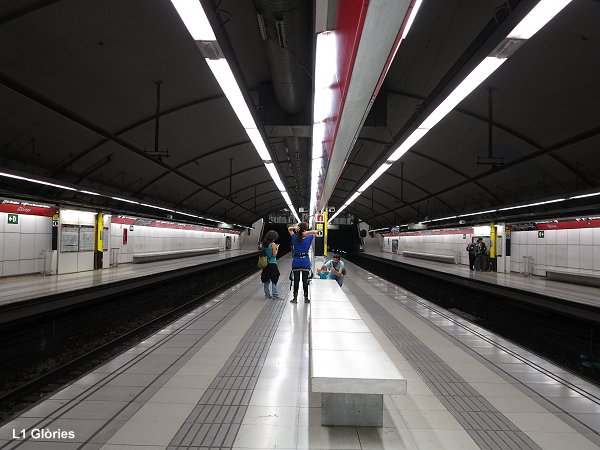 |
| |
Clot |
 |
23-06-1951
Old neighborhood
meaning something like 'hiding place'. But it also means 'low area surrounded
by hills', which could be applied here, as the first settlement was along
the Rec Comtal canal.
|
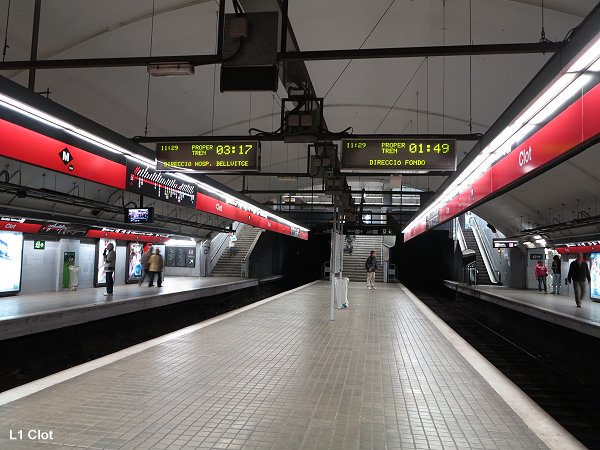 |
| |
Navas |
|
08-05-1953
Street commemorating
a battle against the Muslims at Navas de Tolosa in Andalusia in 1212.
|
|
| |
La
Sagrera |

 

|
26-01-1954
The name
of this neighborhood actually refers to a 'sacred area' around the parish
church. The new station for the AVE, the Spanish high speed train, is
being built in the area - once in service, the present metro station will
be renamed Sagrera-Meridiana to distinguish it from the new railway station
served by lines L4 and L9.
|
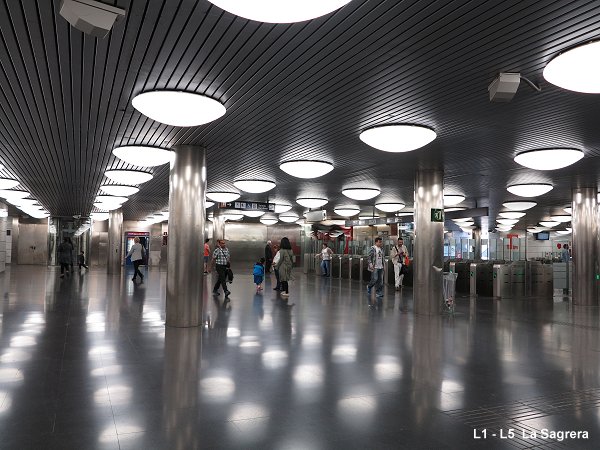
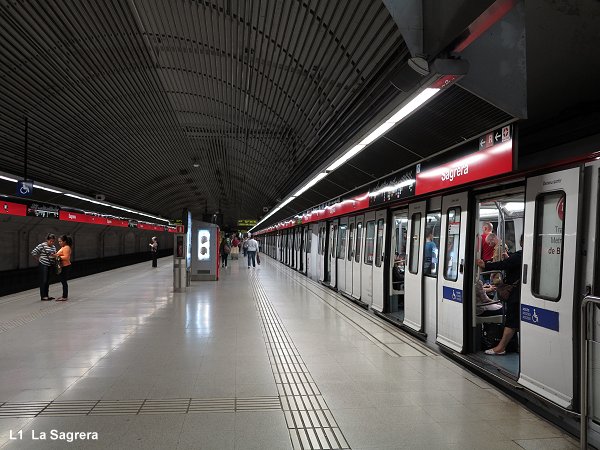
|
| |
Fabra
i Puig |
 |
15-05-1954
Avenue named
after Ferran Fabra i Puig who was an important industrial entrepreneur
and even mayor of Barcelona at the beginning of the century.
|
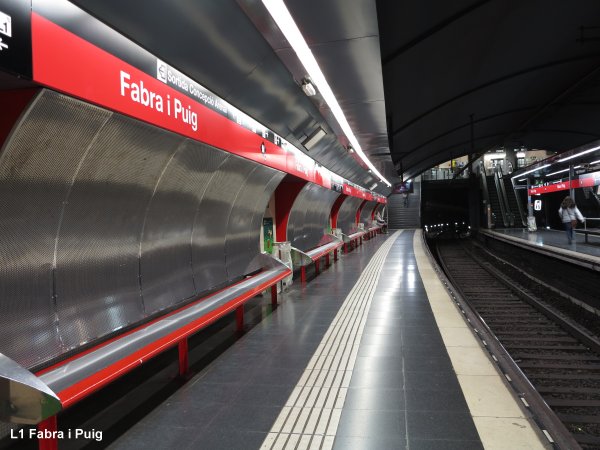 |
| |
Sant
Andreu |
 |
14-03-1968
Sant Andreu
de Palomar is a historic district of Barcelona still maintaing its village-like
atmosphere though surrounded by large residential areas.
|

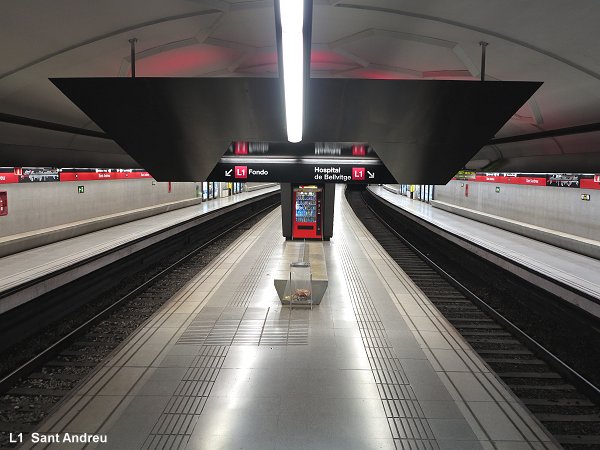
|
| |
Torras
i Bages |
|
14-03-1968
Avenue
dedicated to Josep Torras i Bages, clergy man and writer in the 19th century.
|
|
| |
Trinitat
Vella |
|
21-12-1983
The 'Old
Trinity' is a neighborhood built around an old chapel dedicated to the
Holy Trinity.
|
|
| |
Baró de Viver |
|
21-12-1983
Neighborhood
around a square named after Darius Rumeu i Freixa, the second Baron of
Viver, who was an important city developer and mayor of Barcelona in the
20's.
|
|
| |
Santa Coloma |
|
21-12-1983
The City
of Santa Coloma de Gramanet has its name, like many other villages in
Catalonia, from the dove ('colom'), the symbol of peace and part of the
Holy Trinity.
|
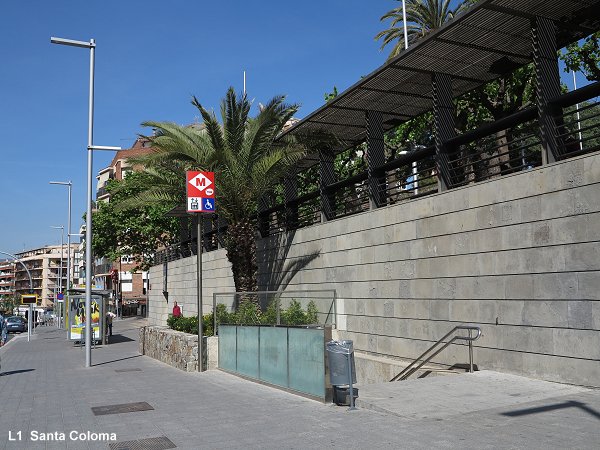
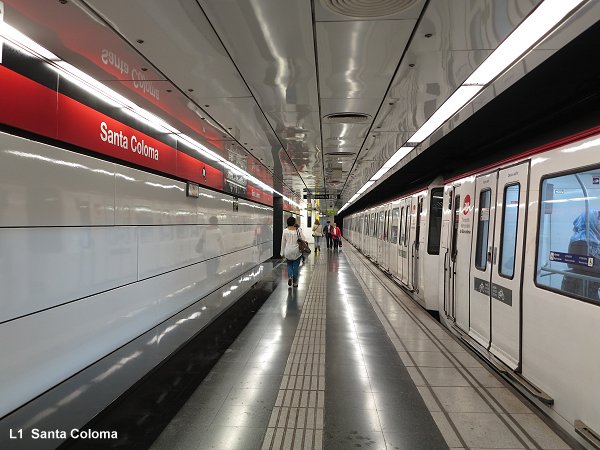
|
| |
Fondo |
 |
18-02-1992
Neighborhood
of Santa Coloma de Gramanet, actually suggesting 'background' or 'lower
part' of that city.
|
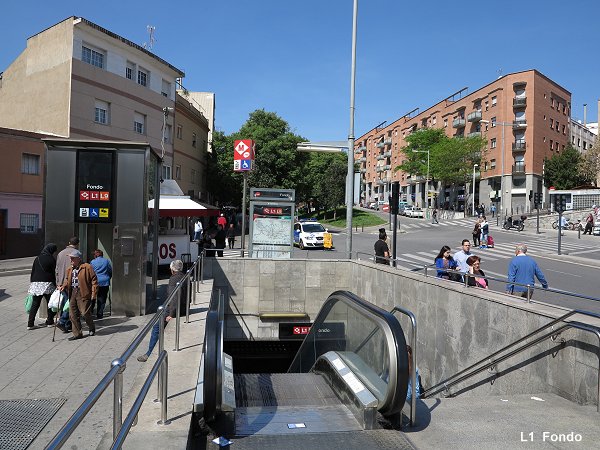
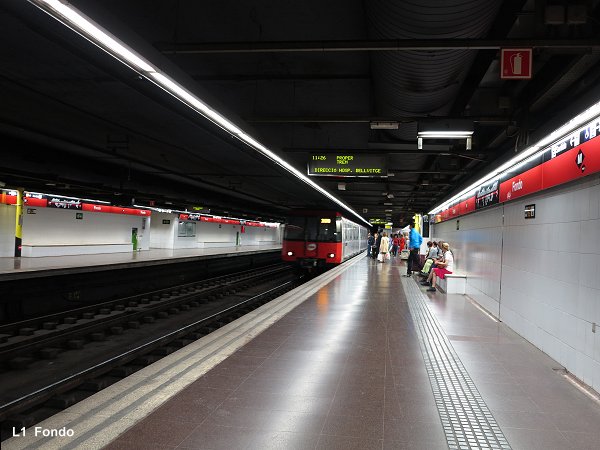
|
